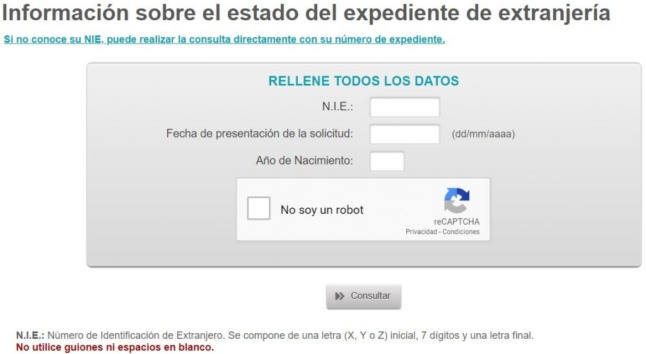Around 22,000 UK nationals registered as residents in Spain in 2020 before Brexit officially came into force, Spain’s Ministry of Inclusion reported in April.
That’s not to say that there weren’t and still aren’t potentially thousands more who began the process before the end of the Transition Period and have either gained residency in 2021 or are still waiting.
“How long is the wait?” is therefore one of most pressing questions for UK nationals who want the peace of mind of knowing that their status and life in Spain are secured.
Needless to say, this isn’t an easy question to answer because there is no average processing or waiting time, for either getting an appointment to present the documents, waiting for an answer from Spanish immigration services, going to the police station for fingerprints or finally picking up the TIE card.
“There is no average waiting time as there is no consistency between the autonomous communities,” Anne Hernández, the head of Brexpats in Spain, an action group which supports UK nationals in Spain with residency and more, told The Local Spain.
“I’ve just been to the police station in Málaga province to help a gentleman who’s processing his TIE and he has to return in three weeks to pick up his card.
“Others are saying 45 days, other 8 weeks, there is no norm I’d say.”
One of the readers who emailed The Local Spain said “we are in Murcia, it’s one week away from 6 months since we made our application”.
Britons who have applied for residency in Spain can check the status of their applications here, where they should see the screen below.

The page where Britons and other foreigners in Spain can check the status of their residency application.
Alicia Gárate, the International Organisation for Migration’s coordinator for the UK Nationals Support Fund Project in Spain, also mentioned in a British Embassy Q&A last December that “we are aware that there are delays and that Murcia has been a particularly challenging region in terms of residency”.
However, this is not to suggest that all immigration offices and police stations in the Murcia region are suffering delays, as there are many factors at play that can affect residency waiting times for Britons in any town or city in Spain, and it can also be down to their own application and circumstances.
“There is no average time because every case needs to be considered on an individual basis,” Gárate also concluded.
“Regions or provinces with a higher population of Britons are generally more likely to have longer waits because of the sheer amount of applications,” Hernández explained.
“I helped a UK national with their residency in La Coruña in Galicia, a part of Spain with far fewer Brits, and we got the carta de resolución (residency results letter) within a matter of days.”
“Whereas in the Valencia region and the Canary Islands I’ve heard waiting times are far longer.”
READ ALSO:
In Catalonia, which is home to around 22,000 Britons, there are comments by Britons on forums saying that their application took “two weeks”, others saying more than three months.
“It really comes down to where exactly in Spain you live,” Hernández concluded.

Alicante province, which is home to more Britons than any other part of Spain with at least 69,700 UK nationals (newest 2021 figures not in yet), is one of the places where there have been hold ups since the new TIE biometric card started to be issued in July 2020.
However, according to the Vice President of Brexpats in Spain Richard Hill, waiting times have been shortened “as they’ve opened several satellite offices to process Britons’ residencies”.
“So the waiting times are better now, they’re not too bad currently. Maybe from start to finish four to five weeks. I can’t say that’s an average figure but that’s my most recent experience, whereas it was two or three months previously,” Hill told The Local Spain.
“In terms of the wait for an appointment, it’s two or three weeks at the moment.
“But it depends who you’re talking about: you have the people who are applying for the TIE under the Withdrawal Agreement, those who are exchanging an existing residency document for a TIE and now you also have those who are applying for the non-lucrative visa and the golden visa.”
One other factor that could be influencing waiting times according to Hill is that “officials are getting very picky with the documents being provided for applications, asking for more and more proof that Brits were living in Spain before December 31st”.
The process and waiting times for those exchanging the old green residency documents for the new TIE card are reportedly more straightforward and faster, as long as the right accompanying documentation (such as an updated padrón) is provided.
“The important thing is to be patient and even if three months have passed make sure that your case is still en trámite which means “in progress”, therefore it is still being considered and an outcome is coming,” Gárate advised.
“So wait a little bit longer and you will get an answer, I’m sure.”
So is there anything else that can be done to speed up the process? The following two links should help you with your Spanish residency application.
READ MORE:




 Please whitelist us to continue reading.
Please whitelist us to continue reading.
Member comments